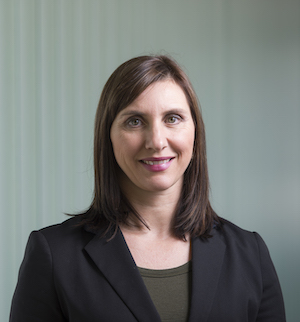Introducing Professor Dominique Cadilhac
Yes, it’s exciting to design new models of healthcare including innovative diagnostic equipment to place in aeromedical helicopters and planes. But how do we make sure these bold inventions will deliver a seriously meaningful improvement in patient care?
Enter Dominique Cadilhac and her avant-garde approach to health systems research and sharp eye for economic evaluation. As the head of Monash University’s Translational Public Health and Evaluation Research division, with a focus on stroke, Dominique is uniquely qualified to lead our evaluation platform.

Dominique, you are the data custodian of the Australian stroke clinical registry. In 100 words or less, why do we need a data registry?
The registry provides a national platform for standardised data collection to ensure we are comparing ‘apples with apples’, regardless where a patient is treated. We can then use the data to identify gaps in care for improvement. We link the data with other datasets so we also collect important information on patient outcomes so we can better understand the long-term consequences of stoke, (www.auscr.com.au). In 2020, the registry data was used to illustrate the unintended consequences of COVID-19 on the quality of stroke care.
Can you share an example when your research has changed the way treatment or stroke care is practised?
The Victorian Stroke Telemedicine Project began in 2010 as a single site demonstration and now provides full coverage of regional Victoria with access to neurologists. As the research-lead for this project, I used implementation science research methods to ensure the clinical program was ‘fit for purpose’ and scalable (Journal of Telemedicine and Telecare 2017;23:850–855). Since 2018, this program has been funded by the Victorian government.
The ‘translation of research into practice’ is a familiar goal for researchers. How will it play out within the stroke alliance’s five-year program?
The great thing about the Alliance is that it is focussed on real-world issues that will be tested in the field. The staged approach is essential to generate the evidence for refinements of the new innovations. We’ll actively collaborate with scientists, engineers and health care workers who will eventually use the new equipment. We will establish essential infrastructure including data platforms to help us optimise where it will be best to locate these new services once operational. These platforms will provide the necessary data to monitor the impact of these innovations as part of routine healthcare for stroke.
Why do you support telehealth so zealously?
Australia is a large country and our specialist healthcare work force for stroke is concentrated in mainly urban areas. The acute management for stroke is not always straightforward, and doctors and nurses working in hospitals without specialist stroke support may feel challenged in making their treatment decisions. Telehealth is a solution to this problem and can be delivered effectively by ensuring stroke specialists can be involved with diagnostic and treatment decisions when they matter most.
You have received several awards, acknowledging the impact of your work. As a former nurse who moved into research, do you have any advice for others who might be interested?
If keen, go for it! We need more academically qualified, clinician researchers in stroke with a background in nursing. Nursing provides opportunities to branch into so many different areas of health care, as well as research. Like all areas of healthcare, a strong evidence base is needed. Getting involved in research means nurses can address evidence-gaps relevant to their practice and help inform the field. Stroke care is interdisciplinary, and nurses are involved in all stages of the patient care pathway. Many of the interventions nurses provide to patients remain invisible without research to show how these influence patient outcomes.
What advice would you give your young self?
I am a very driven person, no matter the focus, so would probably say ‘chilliax’ a bit more.
I would also tell myself to not worry so much what people think, and I don’t need to always keep everyone happy.
The other relevant reflections would be ‘if you have a good research idea write it down and don’t always blurt it out’. Others are very good at running off with a ‘good idea’ – think about the strategy for collaborating to advance the field.
Tell us about your fabulous last name and your background.
My parents are French and immigrated in the late sixties as my father was an avid traveller. Australia was one country he had not yet visited. Suffice to say their planned two-year stay became several decades with regular trips back and forth to France. When I got married I wasn’t ready to change my surname as I was one of only four people with this surname in Australia. Once I published my first article, the deal was sealed – I would be a Cadilhac forever (sorry in-laws!).
Interested to read more?
The Alliance: Improving care and evaluating our success
Our national, digital telestroke network
Sign up for our newsletter to keep in-touch.